A few years ago, my wife and I were living in Abu Dhabi. We were incredibly fortunate in that we had well paid jobs with plenty of holidays. The downsides were the fact that it was not the most vibrant of places and that for more than half of the year going outside was nearly unbearable. Once, I took a taxi in the middle of summer. When I got in, the driver excitedly told me that the car thermometer was reading 56 degrees Celsius, and it was the hottest day he had ever known. I have no idea of the accuracy of the reading. I strongly suspect that it was not quite that hot, but who was going to begrudge him his excitement? The upshot of this was that a place where you felt like you were being roasted to a less than mouth-watering medium/well done for more than half the year was not necessarily an endless source of inspiration for photography. Fine work could be done there, but I personally found it a great struggle.
As a result of this lack of photographic engagement, my images from this time were mostly made when we were on holiday and travelling. Do not get me wrong. I am not complaining about this. I was incredibly fortunate and privileged to have the opportunity to visit and photograph some truly remarkable places. However, if I am honest with myself, it did mean that the work I produced was consistently unoriginal. I do not think there was anything wrong with the photographs that I took. On the contrary, there are a few that I am still rather proud of, but nobody would ever look at them and think them to be something new as many of the pictures appeared to be cheap impersonations of Raghubir Singh or Steve McCurry.
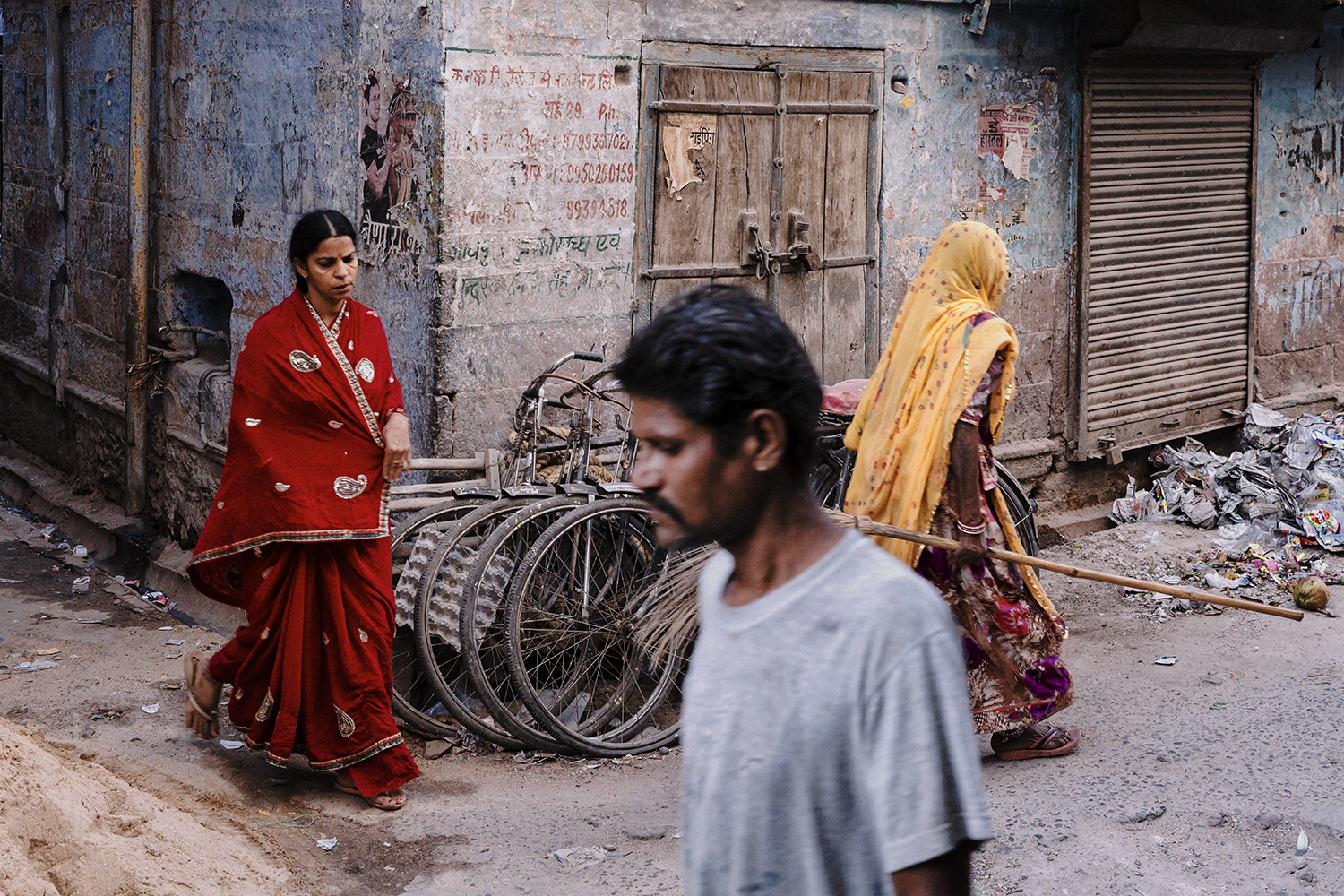
In truth, this was not entirely accidental. For me, McCurry is a master of formal composition. It is all in there: rule of thirds, leading lines, curves, and so on. Singh was the king of making sense of chaos and breaking rules. It made perfect sense to me to use their styles as a basis for my learning and developing. My image, Jodhpur, is a clear homage to Singh. It is one that I still like very much, but I can hardly claim that it is entirely original. To this day, I still struggle to produce work that I feel is original. I do my best, but I am still wracked with doubt about what I create. This got me thinking and brings me to this article’s central question: is originality dead? As photographers, are we all simply repeating things that have been done in the past?
Before writing, I chatted about this question with a knowledgeable friend. His response? “Originality in photography dead? Was it even alive?” Not wishing to submit to his slightly comedic cynicism, I looked up some articles on several sites that explained how photographers can be original. None that I read came up with a convincing message. One featured on a well-known site talked about originality in mobile photography. The author gave some interesting and thoughtful ideas, but the photographic examples given as “original” were nothing of the sort. They looked like a million Instagram pages. It even featured a whole set of pictures of roads disappearing off into the distance as an example! There are few older cliches in art. The unfortunate conclusion from this and the other articles was that to be original, you should do what the author recommends you do and be like everyone else who has read the article.
There is another problem though: what is originality? If we want to talk about it, we need a working definition. The Cambridge Dictionary, unlike the subscriber only online Oxford Dictionary, is useful here – “the quality of being special and interesting and not the same as anything or anyone else”. For me, this works nicely and sets a very high bar for defining work as original. As I usually do when confronted by problems such as this, I consider the greats of photography. There are some examples that demonstrate true originality, and some of these are from relatively recent times. In last month’s article, I discussed Paul Graham’s A Shimmer of Possibility. Whilst some people might find the work somewhat impenetrable, there can be little doubt that it was wholly original. Going back in time a little further, Robert Frank’s The Americans was completely ground-breaking. However, these were works that were original as a body of work rather than as a single image. For a truly original single image, William Eggleston’s untitled red room immediately springs to mind. I would also argue that much of Raghubir Singh’s canon of work is truly original as he made images that are unique in their composition and presentation.
Times have though moved on since all this great original work was created. I look at innumerable images every single day and what I see mostly is cliched and unexciting which generates little spark. This is an inevitable consequence of a world where everyone can be a ‘photographer’ and images are now so ubiquitous that barely a moment seems to go by without one crossing our eyes. Thankfully, there is still a great deal of magnificent photography to be found and whilst very little of it strikes me as meeting the definition of original, it is still wonderful to look at and enjoy.
The two examples of modern images that I present here are, I think, examples that show that originality can still be found in modern photography. Originality may be struggling a little, but it is certainly not dead.
The first is our banner image, Ron Schwager’s Chiffon Fabrics in the Fog. Schwager is a long-time commercial photographer with a background in fine art. Whilst he recognises that the commercial work is vital for paying the bills, he embraces his creative instincts in his more personal work. This personal work has included publishing the book The California Camp Fire-Reflections and Remnants which reflects on the worst wildfire in Californian history.
Chiffon Fabrics in the Fog is a stunning and impactful photograph. It is an image that was pre-planned (Schwager lives far from the coast) and executed perfectly. I adore every element of this photograph from its dream-like quality to the presence of the water and the gorgeous colours of the chiffon fabric. It immediately recalls an historic image that has a similarly phantasmagorical atmosphere, John Cimon Warburg’s 1915 autochrome Cow on Saltburn Sands. Whilst the subjects of the two images are entirely different (a cow being nothing like a washing line of chiffon!), it is the ‘out of placeness’ of the subjects that generates the connection in my mind. That the chiffon cloth, like the cow, belongs somewhere else is immaterial, the image takes me out of time and place and on to an ethereal plane. For me, the meeting and combining of all its elements make this a strikingly original and beautiful photograph.
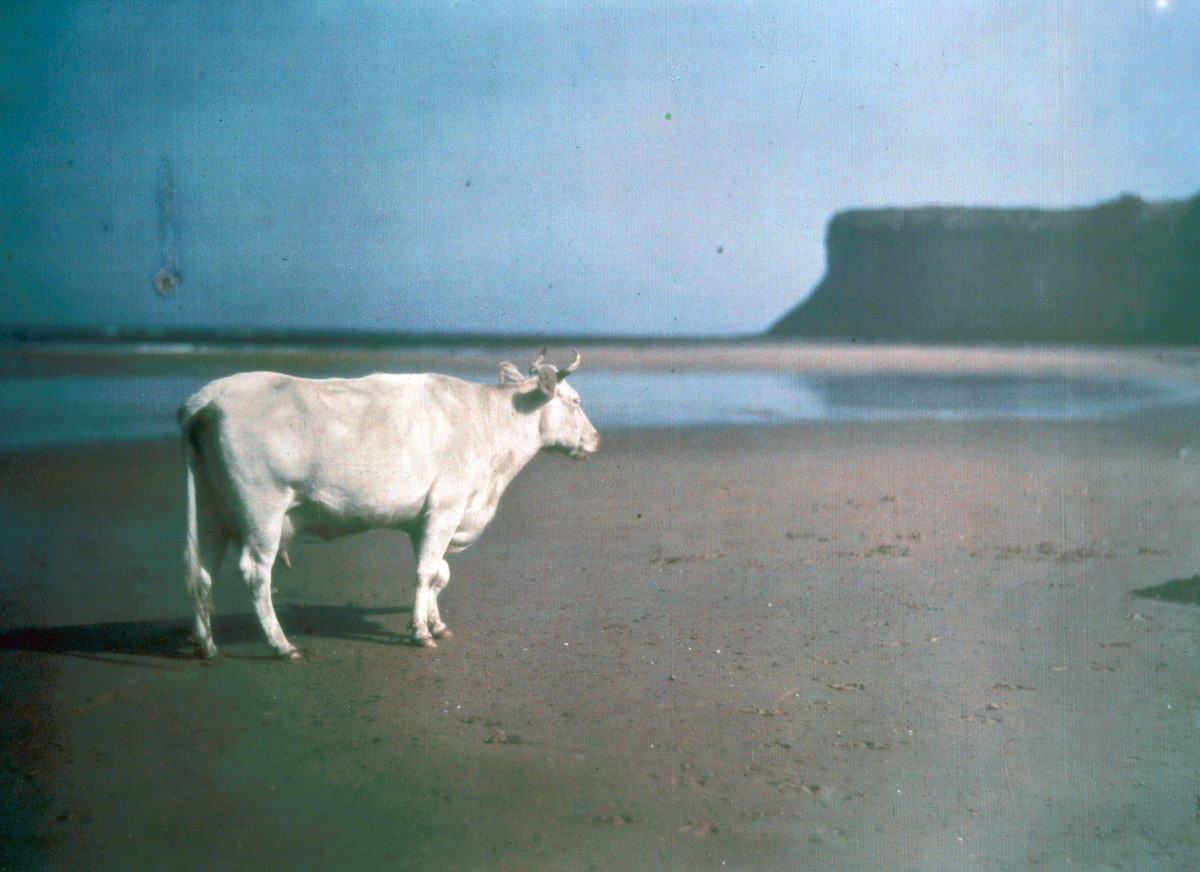
Our other modern image is very different but is no less original and impactful. JP Appleton’s The Entrance is clever, fun, and playful. It is one that makes me smile every time I look at it. Appleton, a previous winner of Historic England’s Photographer of the Year award, is based on the beautiful Norfolk coast. Working in graphic design in Manchester in the 1980s, he was exposed to a critical era in British pop culture – “Madchester”. This heavily influenced his own creative work and direction. These days, he is most comfortable making images of the beautiful landscapes around his home, but COVID-19 and its lockdowns caused him to retreat indoors and look for other things to photograph. This led to the creation of The Entrance.
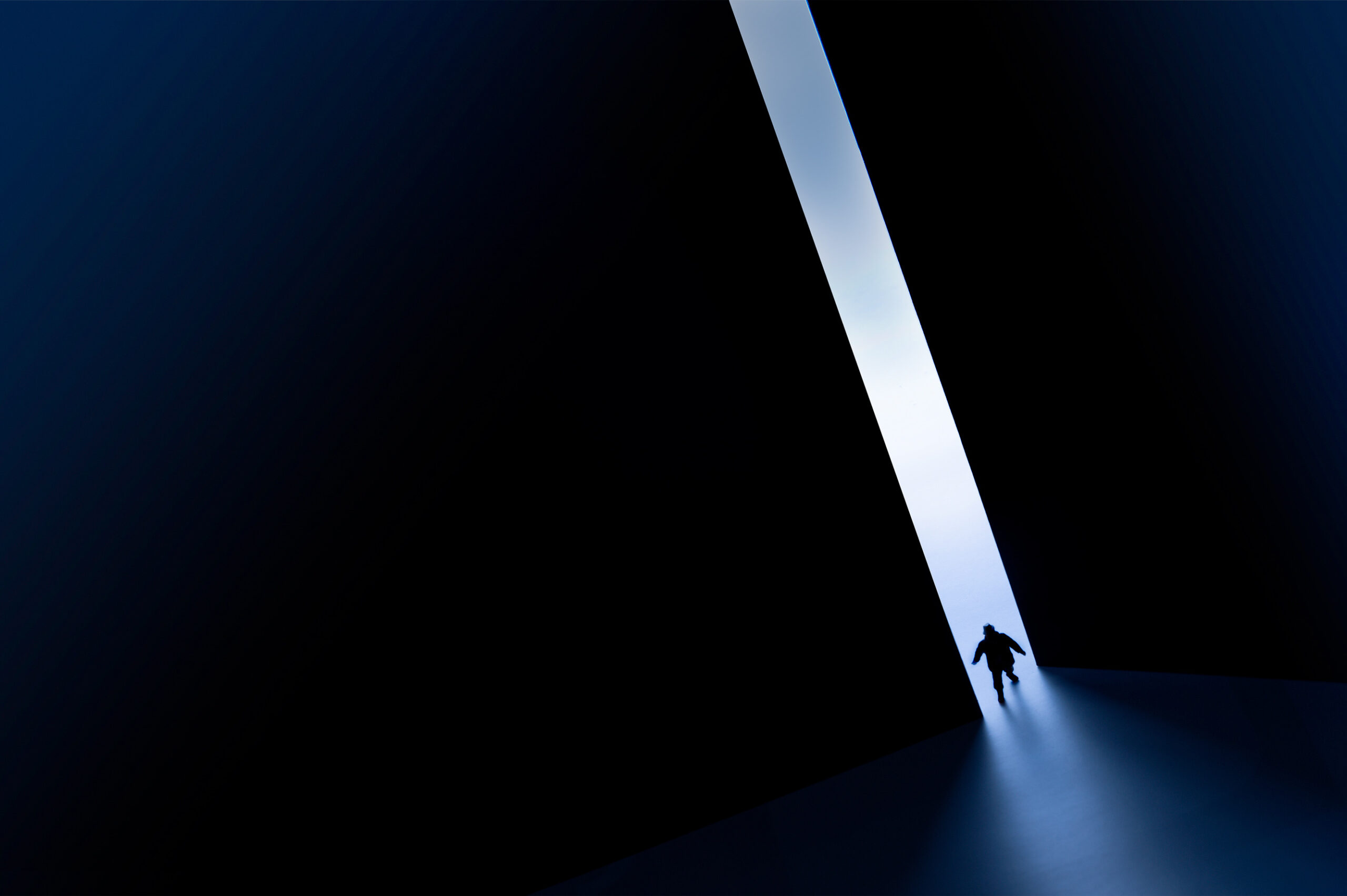
What makes the image original for me is the elements that are brought together in its execution: the science-fiction movie vibe, the scale model, the lighting, the colour palette, and the use of negative space. Every time I look at this image, the Imperial March, also known as the Darth Vader theme, starts up in my head. Of course, we have no idea whether the silhouetted figure is good, evil, or morally ambiguous, but who cares? It works for me!
Returning to our original question – Is originality dead? – I think the answer is no which means that there is still hope for those of us who love the medium. It may take more digging to unearth compared to the days of photography’s infancy, but there are still images out there that can make us react with a little bit of surprise and joy. I think the two images we have discussed today both do that.
RON SCHWAGER
WEBSITE
FINE ART AMERICA
FACEBOOK
INSTAGRAM
JP APPLETON

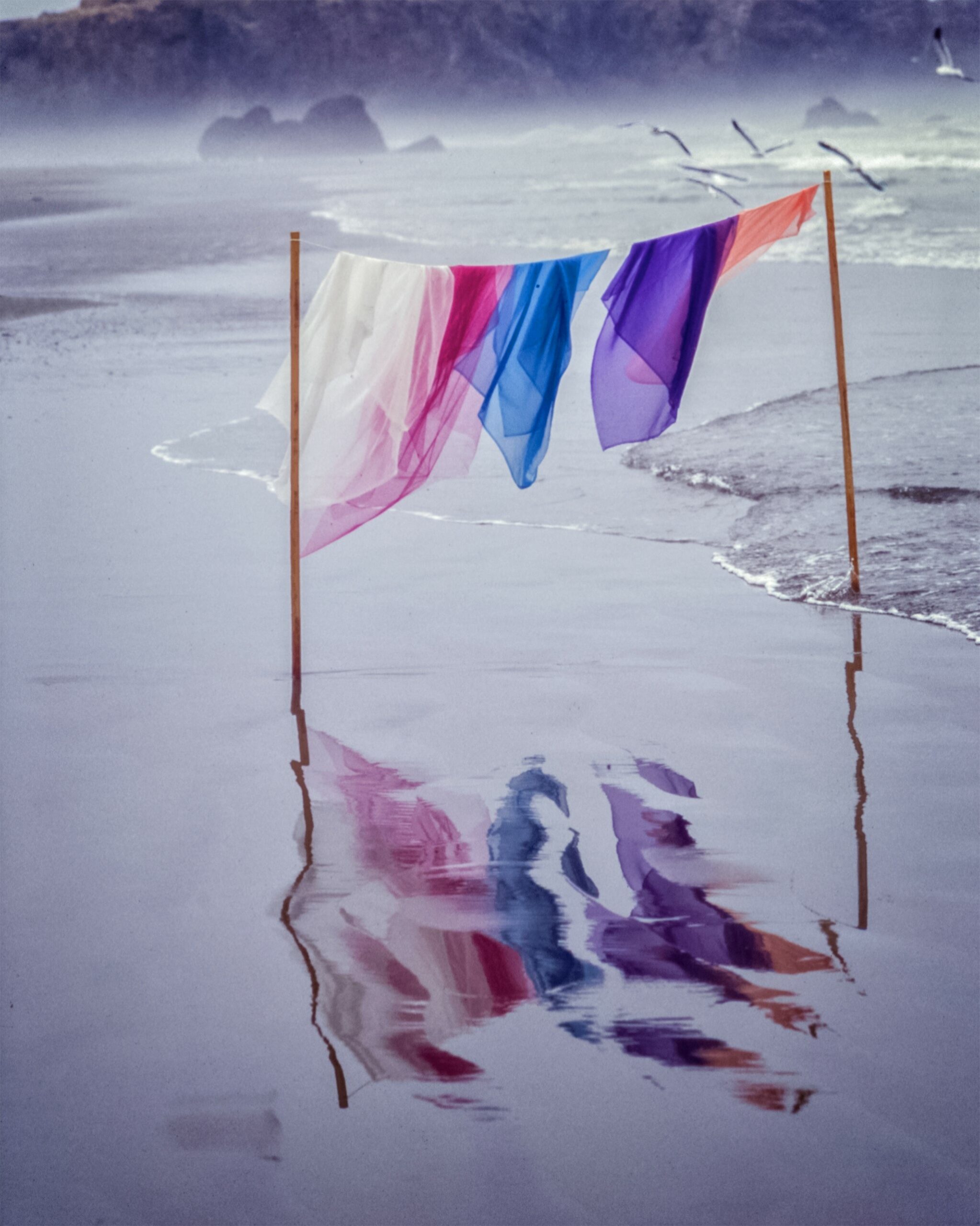

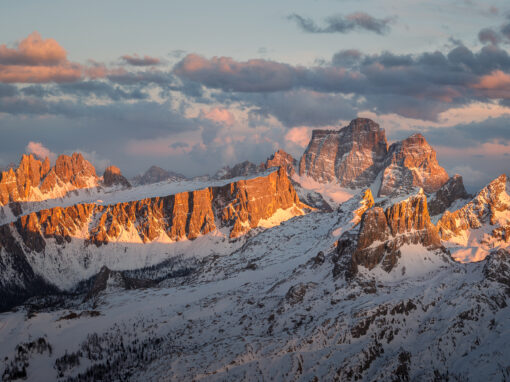
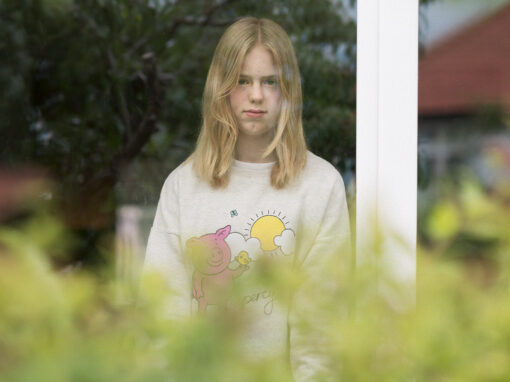
Cary
September 16, 2021 at 07:22
You mention “Jodhpur” as a “cheap impersonation of Steve McCurry,” but unless you have some photo[s] in mind of his that this resembles, or of someone else, it is your image, not his. And from there the question is where you take it, what aspects would you attempt to isolate, amplify, locate in that or in any other context. Would you even feel a need to leave the image alone, instead perhaps combining it in ways that a reporter or documentarian would resist. “Originality” in photography is seeing for yourself – if its in creating a book, as you mention for Frank, think in terms of a potential book, or whatever unit of measure seems plausible to you. There are a myriad of ways that photo artists have found to do this beyond the few you mention.
Robert+Wilson
September 16, 2021 at 16:26
Thank you for your thoughts.
As I noted in the article, “Jodhpur” relates to Raghubir Singh’s work rather than Steve McCurry.
Of course, there are “a myraid of ways” to be original, but I can only talk about a few in about 1500 words.
Cary
September 16, 2021 at 20:39
My point wasn’t whether your “Jodhpur,” in this article or another I read at the same time, resembles either Singh or McCurry. And, parenthetically, whether it seems to parallel the description of your own experience. (A risk in elaborate description).
Lots of people use the same stylistic strategies you mention, for both Singh and McCurry, to greatly different effect especially the geometrical options you cite. Its hard to know how characteristic Warburg’s cow is since his main photo interest appears to be in recreating Pre-Raphaelite art motifs, thereby making the cow indeed “original,” a genuine departure – for him, though P. H. Emerson might come close technically for depth of field (so-called natural focus). Otherwise only his representatives might know.
I wasn’t suggesting a need for more examples of “how to be original,” Rob, rather that the question itself, other perhaps for study purposes of analysis of possibility; but rather that being “original” isn’t the point, its “seeing for yourself,” “making it for yourself.” That would be worth the creative effort more than beating yourself up over whether it looked like it had been previously done.
Frank Styburski
September 16, 2021 at 16:32
I don’t think that originality in photography is dead. I certainly do think that it is more difficult to achieve for a couple of reasons. The first is that a LOT of pictures have been made since its beginnings, with the number advancing exponentially every day. it’s increasingly hard to find fresh ways to approach a photographic situation that hasn’t been tried. That’s not to say that we aren’t trying. We are. But the trick is to say something meaningful with pictures, in an original way. I’ve seen a lot of pictures that are visually stunning, and at the same time, pointless, because while the approach may be original, the content is so contrived that the image is meaningless. A triumph of style over substance, and ultimately superficial eye candy.
Another reason I think that doing work with originality is a challenge is that we have expectations of what a photograph should look like. We stand on the shoulders of the masters who came before us. Certainly we are influenced by their work, and can’t help but make images that are imitative. There is truth in their photographs, and to a degree, if some of that truth comes through in the same way in our own pictures, it is going to be suggestive of some of the great work of our heroes.
While we as photographers are influenced by the work of others, and we have expectations of what our work should look like, our audience has those same expectations. The truth is that if we present images that are outside of that box of expectations, they don’t know how to process what they are seeing. The first inclination is to be dismissive. The second inclination is to reject it as lacking merit. There is only a small segment of our audience that will see original work on its own terms. SO, as we struggle to make our images stand out in an expansive field of excellent work, we are hindered by a marketplace that at the same time encourages innovation, but is indifferent to it in practice.
Allow me to illustrate my point with a couple of examples.
I drive a Toyota Camry. It is reliable transportation and looks pretty good. But in terms of design originality, it is indistinguishable from a similarly marketed Nissan, Honda, or Chevrolet. Another example can be seen in the way electric guitars are marketed. The fender Stratocaster and Gibson Les Paul models were designed in the 1950s. Sixty-five years later, nearly every guitar maker sells models that are identical to those iconic designs. It is only that we expect our cars and guitars to look a certain way that they are accepted and successful in the marketplace.
Robert+Wilson
September 16, 2021 at 16:35
Thank you for your thoughtful response Frank. These words…
“While we as photographers are influenced by the work of others, and we have expectations of what our work should look like, our audience has those same expectations. The truth is that if we present images that are outside of that box of expectations, they don’t know how to process what they are seeing. The first inclination is to be dismissive. The second inclination is to reject it as lacking merit. There is only a small segment of our audience that will see original work on its own terms. SO, as we struggle to make our images stand out in an expansive field of excellent work, we are hindered by a marketplace that at the same time encourages innovation, but is indifferent to it in practice.”
I think are particularly relevant and I definitely agree.
There is so much more that can be written on the subject of course.
Cheers,
Rob
Elizabeth Bourne
September 18, 2021 at 22:07
Thank you for the interesting essay. For me, the question is not whether originality is dead, but does it matter. I do not think it does. In fact, I think originality can be a distraction. My background is in fine art, and it has sometimes seemed to me that the quest for originality often leads to work that lacks a connection to the viewer. Simply because something is original doesn’t mean its well made, or that it evokes an emotion in the viewer.
To my mind the important element is passion. Does the artist feel passionately about their work? Does it have meaning for the person who makes it? Have they made something that moves the viewer? I am far more interested in work that is made with passion and meaning than in mere originality. If my work does not inspire some kind of resonance in the viewer, an emotion or recognition or surprise — then whether it is an original image/idea or not, I did not succeed.
Frank Styburski
September 19, 2021 at 17:16
Thanks, Elizabeth.
I agree. While we all look for fresh ways to make a visual statement, it is more important to do work that is meaningful and matters.
Robert+Wilson
October 8, 2021 at 15:34
Thank you for your thoughts!